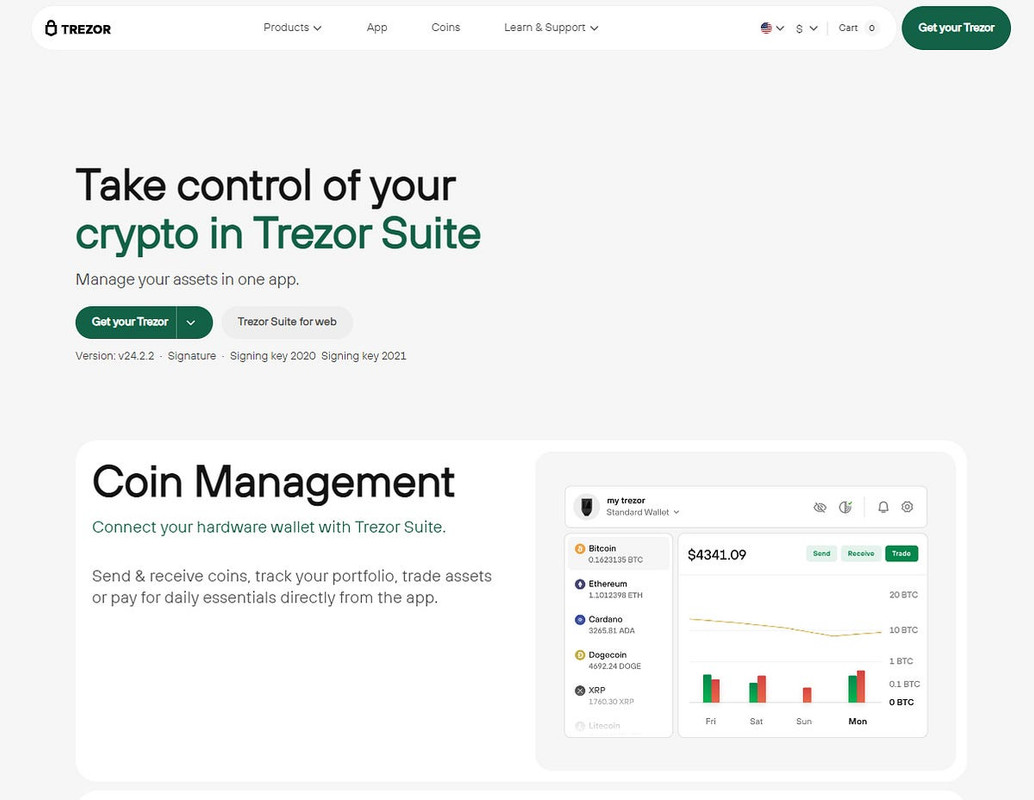Start Your Secure Crypto Journey
Welcome to the world of secure digital asset management. Your hardware wallet ensures that your cryptocurrencies remain safe, giving you complete control over your funds. This guide will take you step by step through setup, backup creation, and secure usage.

Why a Hardware Wallet Matters
Storing cryptocurrency online exposes your funds to hacks and phishing attacks. Hardware wallets keep your private keys offline, protecting them from malware and unauthorized access. They combine convenience and security, allowing you to manage your crypto with confidence.
With a hardware wallet, only you can approve transactions. Even if your computer is compromised, the wallet prevents unauthorized transfers. Whether you’re new to crypto or switching from software wallets, following these steps ensures your assets are safe.
Step 1: Unboxing Your Wallet
Carefully unbox your hardware wallet. Check for a sealed package, and ensure the device, USB cable, recovery card, and documentation are present. Do not use the device if it appears damaged or tampered with.
Connect the wallet to your computer. The device should turn on and display a welcome message. If it does not, try another USB port or cable before contacting support.
Step 2: Install the Companion Application
To use your wallet, download the official companion app from the manufacturer’s website or verified app store. Avoid third-party downloads that may contain malware. The app allows you to manage accounts, view balances, and perform transactions securely.
Once installed, the app will detect your connected device and guide you through the setup process.
Step 3: Update Firmware
Firmware updates enhance device security and stability. If prompted, update your wallet to the latest firmware. Follow the instructions carefully and avoid disconnecting the device during the process. Updating ensures you have the latest protections and features.
Step 4: Create a Recovery Seed
The recovery seed is a set of words generated by your device. This seed acts as a backup to restore your wallet in case it is lost or damaged. Write the words on the provided recovery card — do not save them digitally or take photos.
- Keep the seed offline in a safe, private place.
- Never share it with anyone.
- Confirm the words on the device as instructed to ensure accuracy.
Your recovery seed is essential for wallet restoration. Without it, you may lose access to your funds permanently.
Step 5: Set a PIN
Protect your device with a PIN. This number is required to access your wallet or approve transactions. Choose a PIN that is easy for you to remember but difficult for others to guess.
The wallet enforces increasing delays after failed attempts to prevent brute-force attacks. Your PIN is an additional layer of security for your funds.
Step 6: Access Your Wallet Dashboard
After setup, the companion app displays your dashboard. Here you can view balances, recent transactions, and manage accounts. The dashboard provides a clear view of all assets stored on your device.

Step 7: Receiving Cryptocurrency
To receive funds, select an account and click “Receive.” Verify that the receiving address shown in the app matches the one displayed on the hardware wallet. This prevents malware from modifying the address.
After confirmation, share the address with the sender. For large amounts, consider sending a small test transaction first to verify everything works correctly.
Step 8: Sending Cryptocurrency
Sending crypto involves entering the recipient’s address, amount, and reviewing transaction fees. The wallet will display the transaction details on the device for confirmation. You must approve the transaction physically to complete it, ensuring security even on compromised computers.
Step 9: Adding More Assets
Many wallets support multiple cryptocurrencies. You can add additional coins or tokens through the app. Some networks may require enabling specific modules. Follow the instructions to add each asset safely.
Step 10: Security Best Practices
Hardware wallets are secure, but your habits matter. Follow these guidelines to maintain security:
- Keep your recovery seed offline and private.
- Never share your PIN or seed with anyone.
- Use strong passwords on your computer and app.
- Always verify transaction addresses on the device screen.
- Consider enabling a passphrase for extra protection.
Following these habits ensures that your crypto remains safe from theft or unauthorized access.
Step 11: Troubleshooting and Support
If you encounter problems, refer to the official support documentation. Common issues include USB connectivity, outdated firmware, or app errors. Restarting the device and application often resolves minor problems.
Contact official support for complex issues, but never reveal your recovery seed or PIN — legitimate support teams never ask for this information.